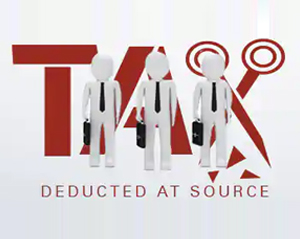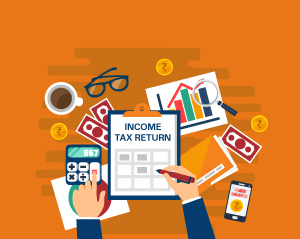Paying taxes is not just a legal obligation but also a vital contribution to the India’s growth and development. To streamline the process, the Income Tax department provides various forms tailored to different taxpayer categories and income sources. Among these, the ITR-2 form is specifically designed for individuals and Hindu Undivided Families (HUFs) with income from sources other than business or profession.
What is ITR-2?
ITR-2 is a tax return form for individuals and Hindu Undivided Families (HUFs) who do not have income from profits and gains of business or profession. It applies to those earning income from salary or pension, multiple house properties, capital gains from investments or property sales and other sources such as lottery winnings or racehorse bets. It also covers agricultural income exceeding ₹ 5,000 and applies to Residents Not Ordinarily Resident (RNOR) and Non-Residents (NR).
Individuals must file ITR-2 if their total income exceeds ₹ 50 lakh. Those who are company directors or have invested in unlisted equity shares must also use this form.
What are the key features of ITR-2?
Eligibility: This form is designed for individuals and HUFs who do not earn income from business or profession.
Types of income covered: ITR-2 includes earnings from salary, capital gains, pension and other sources such as interest or dividends.
Filing options: The form can be submitted online
What is the structure of the ITR 2 Form?
The ITR-2 Form is structured into three main parts and schedules.
Main parts
Part A: General information, such as name, PAN, address and similar details
Part B-TI: Computation of total income after deductions
Part B-TTI: Computation of tax liability for the year
Schedules
Schedules are detailed sections that help taxpayers to report different types of income.
Schedule S: Income from salary
Schedule HP: Income from house property
Schedule CG: Income from capital gains
Schedule 112A: Capital gains from equity shares
Schedule 115AD: Capital gains from equity shares for NRs
Schedule VDA - Income from Transfer of Virtual Digital Assets
Schedule OS: Income from other sources
Schedule CYLA: Set-off of current year losses
Schedule BFLA: Set-off of brought-forward losses
Schedule CFL: Carry forward of losses to future years
Schedule VIA: Deductions under Chapter VI-A
Schedule 80G: Donations eligible for deduction under Section 80G
Schedule 80GGA: Donations for rural development and research
Schedule 80GGC: Statement of contribution made to political parties
Schedule 80DD: Details of deduction in respect of maintenance including medical treatment of a dependent who is a person with disability
Schedule AMT: Computation of Alternative Minimum Tax (AMT) under Section 115JC
Schedule AMTC: Tax under Section 115JD
Schedule SPI: Statement of income arising to spouse/minor child/son’s wife or any other person or association of persons to be included in the income of the assessee in Schedules-HP, CG and OS
Schedule SI: Income taxable at special Rates
Schedule EI: Exempt income
Schedule PTI: Pass through income details from business trust or investment fund as per Section 115UA, 115UBa
Schedule FSI: Statement of income accruing or arising outside India
Schedule TR: Summary of tax relief for taxes paid abroad
Schedule FA: Foreign assets and income from foreign sources
Schedule 5A: Apportionment of income for spouses (Portuguese Civil Code)
Schedule AL: Statement of assets and liabilities if income is more than ₹ 50 lakh
Schedule Tax-deferred on ESOP: Reporting of deferred tax on Employee Stock Option Plans (ESOPs)
Schedule Tax payment: Payment details of advance tax or self-assessment tax
Declaration by the taxpayer
Details to be filled if a tax return preparer has prepared the return
How to file ITR-2 online?
- Open the e-Filing portal and sign in using your user ID and password
- Go to the e-File section, select ‘Income Tax Returns’, and choose ‘File Income Tax Return’
- Select the assessment year and click Continue
- Select ‘Online’ and proceed
- Choose the status that applies to you and move forward
- After selecting ITR-2, review the required documents and click ‘Let’s Get Started’
- Check the pre-filled information, make any necessary changes and confirm each section
- Fill in income and deduction details, confirm each section and proceed
- The portal will show you a summary of tax calculations. Select ‘Pay Now’ or ‘Pay Later’ if tax is payable. If no tax is due or a refund is expected, click ‘Preview Return’
- Review the return, validate the details and move to verification
- Choose a preferred verification method and complete the e-Verification process
What are the required documents for filing ITR-2 online?
- Form 16
- Form 16A
- Form 26AS
- Previous year’s ITR-V for carrying forward losses
- Bank passbook and fixed deposit receipts
- Rent receipts for House Rent Allowance (HRA) claims
- Rental income documents, such as tenant details
- Capital gains statement
- Proof of losses incurred during the year
- Tax-saving receipts, such as life and health insurance premiums, donations, rent and tuition fees under deductions under 80C, 80D, 80G and 80GG
How to file ITR-2 offline?
- Visit the e-Filing portal and download the offline utility from the Downloads section. If logged in, go to ‘Income Tax Returns’, select the assessment year, choose ‘Offline Mode’, and download the utility
- Install the offline utility on your computer. Open the utility and click Continue
- Click ‘File Returns’ on the ‘Income Tax Returns’ page. Download the Excel file (ZIP format), extract it and open it
- Click ‘Enable Content’ and select ‘Enable Macros’ to proceed
- Fill in all required fields (red) and optional fields (green)
- Click ‘Validate’ on each tab before moving forward
- Generate the XML file and save it. Log in to the e-Filing portal, select ‘Original/Revised Return’, choose ‘Submission Mode’ and upload the XML file
- Complete the process and submit your return
What are some common mistakes to avoid while filing ITR-2?
- Choosing the wrong ITR form: Filing with an incorrect form will require a revision and resubmission which can delay your refund.
- Missing the deadline: Late filing can lead to late fees
- Not verifying the return: Your ITR filing remains incomplete until verification.
Tips to file ITR-2 online
Link PAN and Aadhaar
Make sure to link your PAN and Aadhaar before you file your ITR to avoid rejection, delays and penalties.
Pre-validate at least one bank account
You must pre-validate your bank account to ensure your refund can be initiated. In case of multiple accounts, make sure to pre-validate at least one account.
Check Form 26AS
Form 26AS helps verify TDS on salary and other income. Make sure to download it from the e-Filing portal and check it for accuracy
Contact Number linked with Aadhaar, e-Filing portal, NSDL and CDSL
Remember to link your latest contact number with your Aadhaar. You must also link it to the e-Filing portal, the National Securities Depository Limited (NDSL) and the Central Depository Services Limited (CDSL).
Required documents
Make sure to keep all the above-mentioned documents ready.
Major changes and updates in ITR-2
- A new Schedule VDA has been introduced for income earned from cryptocurrencies and other virtual digital assets
- Schedule SI has been updated to include Section 115BBH, which covers income from the transfer of virtual digital assets
- Section 89A now includes an additional clause providing relief to residents with income from foreign retirement benefit accounts
- Under Section 80CCH, applicants employed by the Central Government can claim tax deductions for their entire contribution to the Agniveer Corpus Fund
- A new exemption under Section 10(12C) covers payments from the Agniveer Corpus Fund to individuals enrolled under the Agnipath Scheme or their nominees
- In Schedule 80G, Clause D now requires additional information for the donation reference number (ARN)
COMP/DOC/Jun/2025/116/0447
Frequently Asked Questions
Who cannot file ITR 2?
ITR-2 cannot be filed by individuals or HUFs whose total income includes profits and gains from business or profession.
What sections do you need to fill in ITR 2 before submitting the form?
All relevant parts and schedules that apply to you must be accurately completed before submitting the form.
People like you also read ...






